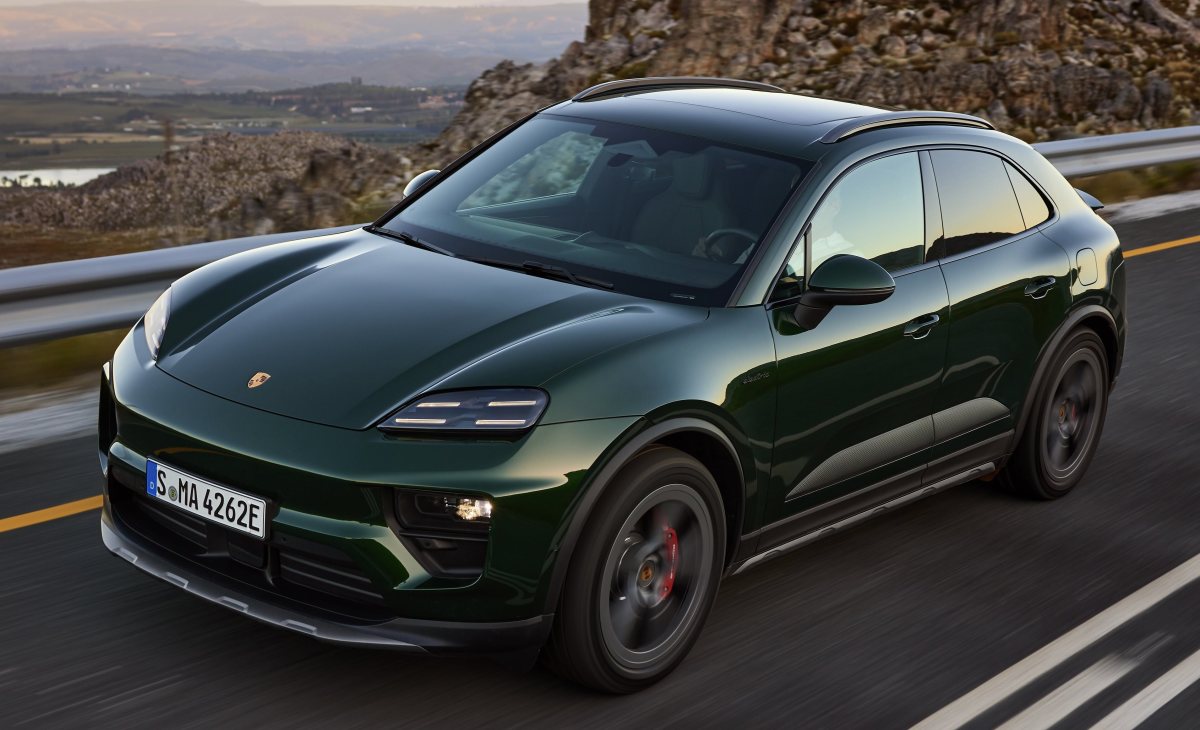Navigating The Chinese Market: The Struggles Of BMW, Porsche, And Other Auto Brands

Table of Contents
Intense Domestic Competition
The rise of powerful domestic Chinese auto brands like BYD, Geely, and NIO presents a formidable challenge to international players. These brands are not only rapidly gaining market share but are also aggressively competing on price and technological innovation. Their success stems from several factors:
- Growing market share of domestic brands: Chinese brands are increasingly dominating the sales charts, leaving less room for international competitors. This is fueled by strong consumer preference and government support.
- Aggressive pricing strategies of Chinese manufacturers: Domestic brands often offer vehicles with comparable features at significantly lower price points, directly impacting the profitability of international brands.
- Rapid technological innovation in electric vehicles and autonomous driving: Chinese manufacturers are at the forefront of electric vehicle (EV) and autonomous driving technology, areas where international brands are facing increasing pressure to keep pace. This is particularly crucial in the booming electric vehicles in China market.
- Strong government support for the domestic auto industry: The Chinese government actively promotes its domestic auto industry through subsidies, tax breaks, and favorable regulations. This creates a significant advantage for domestic players in the Chinese automotive market.
The success of brands like BYD, with its Blade Battery technology, and NIO, known for its battery swap technology, illustrates the technological prowess and competitive pricing strategies impacting the entire Chinese auto brands landscape.
Understanding Consumer Preferences and Trends
Understanding Chinese consumer preferences is paramount for success. The market is dynamic, with evolving demands for technology, luxury, and brand image. Key trends shaping consumer choices include:
- Preference for SUVs and electric vehicles: SUVs and EVs represent significant growth segments, with Chinese consumers showing a strong preference for these vehicle types. This has forced international brands to adapt their product portfolios.
- Importance of digital marketing and online presence: Digital marketing and a strong online presence are crucial, as Chinese consumers heavily rely on online reviews and social media for information. Effective digital marketing China strategies are non-negotiable.
- Emphasis on brand reputation and social media influence: Brand reputation and social media influence are incredibly important in China. Negative publicity can severely damage sales, while positive social media engagement can significantly boost brand perception. The influence of social media marketing China can't be overstated.
- Growing demand for personalized and customized vehicles: Consumers are increasingly seeking personalized options and customized features, demanding higher levels of customization in the luxury cars in China market.
These evolving preferences necessitate tailored strategies for international auto brands seeking a foothold in the luxury cars in China market and the broader Chinese consumer preferences landscape.
Navigating Regulatory Hurdles and Tariffs
Navigating the regulatory landscape in China is a significant challenge for international auto brands. Complex regulations, import tariffs, and government policies create hurdles that require careful planning and strategic navigation. These include:
- Strict emission standards and environmental regulations: China has stringent emission standards and environmental regulations, making it crucial for international brands to comply with these rules.
- Complex import and distribution networks: Establishing efficient import and distribution networks in China is a complex process, requiring significant investment and logistical expertise. Navigating the distribution networks China presents a major challenge.
- Government policies favoring domestic brands: Government policies often prioritize domestic brands, creating an uneven playing field for international competitors. Understanding the Chinese government policies impacting the automotive industry is key.
- Navigating bureaucratic processes and obtaining necessary licenses: Obtaining the necessary licenses and permits to operate in China can be a lengthy and bureaucratic process, requiring significant time and resources. This adds to the complexities of automotive regulations China.
Understanding and complying with Chinese automotive regulations are critical for successful market entry and operation.
Localization Strategies
Localization is crucial for success in the Chinese market. This involves adapting products, marketing, and operations to resonate with local consumers and preferences. Effective localization strategies include:
- Developing China-specific models and features: Developing models and features tailored to the specific needs and preferences of Chinese consumers is essential. This encompasses developing China specific models.
- Tailoring marketing campaigns to resonate with Chinese consumers: Marketing campaigns must be culturally sensitive and resonate with the values and preferences of Chinese consumers. This requires effective marketing localization.
- Establishing strong local partnerships and distribution networks: Building strong local partnerships and establishing effective distribution networks are critical for success. Finding Chinese partnerships is crucial for market penetration.
- Investing in local research and development: Investing in local research and development (R&D) is essential to understand and respond to evolving consumer needs and market trends.
A robust localization strategy China is vital for international brands looking to make significant inroads into the market.
Supply Chain Disruptions and Economic Fluctuations
The Chinese auto market is susceptible to global supply chain disruptions and economic fluctuations. These factors pose significant risks to international auto brands operating in the region. These disruptions include:
- Impact of global chip shortages on production: Global chip shortages have severely impacted production across the industry, highlighting the vulnerability of global supply chains.
- Economic slowdown and its effect on consumer spending: Economic slowdowns can significantly reduce consumer spending, impacting demand for automobiles.
- Geopolitical factors affecting the market: Geopolitical instability and trade tensions can also affect market stability and supply chains.
- Managing risks associated with supply chain disruptions: International auto brands need robust strategies to manage the risks associated with supply chain disruptions.
Understanding and mitigating the impact of supply chain disruptions China and economic fluctuations China is crucial for long-term stability and success.
Conclusion
Successfully navigating the Chinese market requires a deep understanding of its unique challenges and opportunities. International brands like BMW and Porsche, while successful to a degree, face significant hurdles from intense domestic competition, evolving consumer preferences, and regulatory complexities. By adapting their strategies, embracing localization, and carefully managing risks, international auto brands can increase their chances of success in this dynamic and lucrative market. Learn more about overcoming the challenges of entering the Chinese automotive market and develop a successful strategy for navigating the intricacies of the Chinese market. Don't let the challenges of the Chinese automotive market deter you; with the right approach, significant success is achievable.

Featured Posts
-
 Mqbwdh Kshmyr Eyd Ky Khwshywn Myn Bhy Bharty Mzalm Nwjwan Shhyd
May 02, 2025
Mqbwdh Kshmyr Eyd Ky Khwshywn Myn Bhy Bharty Mzalm Nwjwan Shhyd
May 02, 2025 -
 Boost Your Sales Ponant Offers 1 500 Flight Credit On Paul Gauguin Cruises
May 02, 2025
Boost Your Sales Ponant Offers 1 500 Flight Credit On Paul Gauguin Cruises
May 02, 2025 -
 Kampen Dagvaardt Enexis Gebrek Aan Stroomnetaansluiting
May 02, 2025
Kampen Dagvaardt Enexis Gebrek Aan Stroomnetaansluiting
May 02, 2025 -
 Ireland On High Alert After Frances Six Nations Rout Of Italy
May 02, 2025
Ireland On High Alert After Frances Six Nations Rout Of Italy
May 02, 2025 -
 Serious Fall At Baseball Game Fan Hospitalized After Outfield Incident
May 02, 2025
Serious Fall At Baseball Game Fan Hospitalized After Outfield Incident
May 02, 2025
Latest Posts
-
 Bbc Income Plunge Unprecedented Challenges Ahead
May 02, 2025
Bbc Income Plunge Unprecedented Challenges Ahead
May 02, 2025 -
 Analyzing Voter Turnout In Florida And Wisconsin Understanding The Shifting Political Tides
May 02, 2025
Analyzing Voter Turnout In Florida And Wisconsin Understanding The Shifting Political Tides
May 02, 2025 -
 What Florida And Wisconsins Election Turnout Reveals About The Political Landscape
May 02, 2025
What Florida And Wisconsins Election Turnout Reveals About The Political Landscape
May 02, 2025 -
 Where To See James B Partridge Perform In Stroud And Cheltenham
May 02, 2025
Where To See James B Partridge Perform In Stroud And Cheltenham
May 02, 2025 -
 Radio 4 Scheduling Understanding The Absence Of Robinson And Barnett Together
May 02, 2025
Radio 4 Scheduling Understanding The Absence Of Robinson And Barnett Together
May 02, 2025
